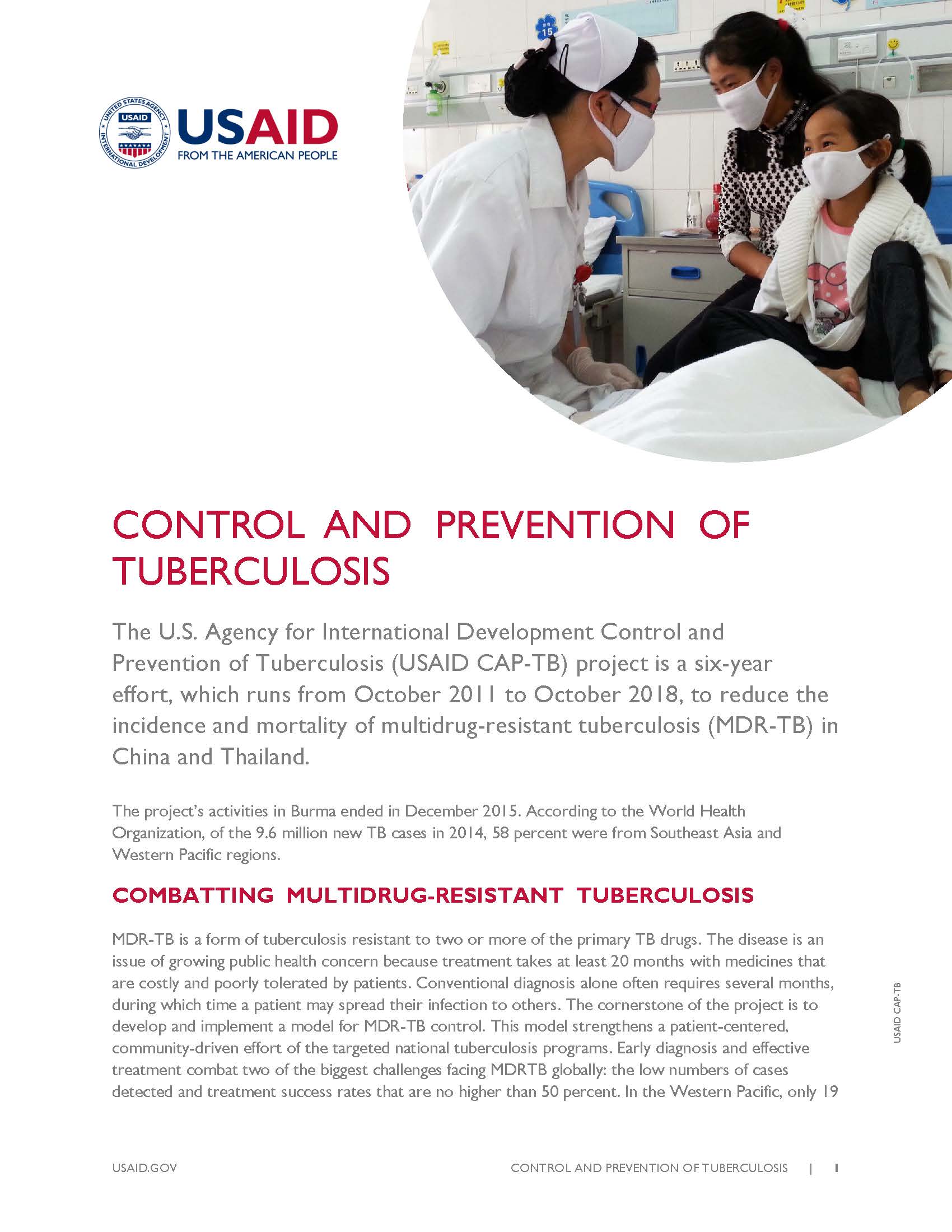Speeches Shim
The U.S. Agency for International Development Control and Prevention of Tuberculosis (USAID CAP-TB) project is a six-year effort, which runs from October 2011 to October 2018, to reduce the incidence and mortality of multidrug-resistant tuberculosis (MDR-TB) in China and Thailand. The project’s activities in Burma ended in December 2015. According to the World Health Organization, of the 9.6 million new TB cases in 2014, 58 percent were from Southeast Asia and Western Pacific regions.
COMBATTING MULTIDRUG-RESISTANT TUBERCULOSIS
MDR-TB is a form of tuberculosis resistant to two or more of the primary TB drugs. The disease is an issue of growing public health concern because treatment takes at least 20 months with medicines that are costly and poorly tolerated by patients. Conventional diagnosis alone often requires several months, during which time a patient may spread their infection to others. The cornerstone of the project is to develop and implement a model for MDR-TB control. This model strengthens a patient-centered, community-driven effort of the targeted national tuberculosis programs. Early diagnosis and effective treatment combat two of the biggest challenges facing MDRTB globally: the low numbers of cases detected and treatment success rates that are no higher than 50 percent. In the Western Pacific, only 19 percent of the estimated MDR-TB cases were notified in 2014 and in Southeast Asia, 34 percent of the estimated MDR-TB cases were notified in 2014. MDR-TB treatment success was 48 percent for the Southeast Asia region and 51 percent for the Western Pacific region.
IMPACT AND RESULTS
- In Burma, from 2011 to 2015, over 600 patients received support to complete their treatment with a success rate of 88 percent, far surpassing the global average of 50 percent and the World Health Organization’s standard for MDR-TB. The project’s model is now being scaled up in areas of the country with the highest burden of MDR-TB, under a separate initiative.
- In China, USAID CAP-TB’s model has introduced social media and peer counselors to support patients, changing how healthcare providers and patients tackle the disease. With th, project’s support, MDR-TB patients in Yunnan Province have treatment success rates that are much higher than the China national average. Provinces around the country have requested support to introduce these interventions. The project’s model is recognized at the national level, and in 2017-8 it has been incorporated as a lead case study in a global pilot project to improve patient-centered care for MDR-TB patients under the US National Action Plan (NAP) for MDR-TB
- In Thailand, from 2011 to 2017 and similar to Burma and China, USAID CAP-TB supported provinces to achieve success rates that surpassed the national average. The project team helped Thailand’s Bureau of Tuberculosis to introduce bedaquiline for the treatment of extensively drug-resistant tuberculosis. This is the first new drug in Thailand to combat TB in nearly 45 years; it is specifically approved for MDR-TB. The USAID-Janssen Bedaquiline Donation Program has provided the drug free of charge to the country to treat patients with extensively drug-resistant TB.
PARTNERS USAID partners with FHI 360, the International Union Against Tuberculosis and Lung Disease, national tuberculosis programs, and local governmental and nongovernmental organizations in the Greater Mekong Subregion.


Comment
Make a general inquiry or suggest an improvement.